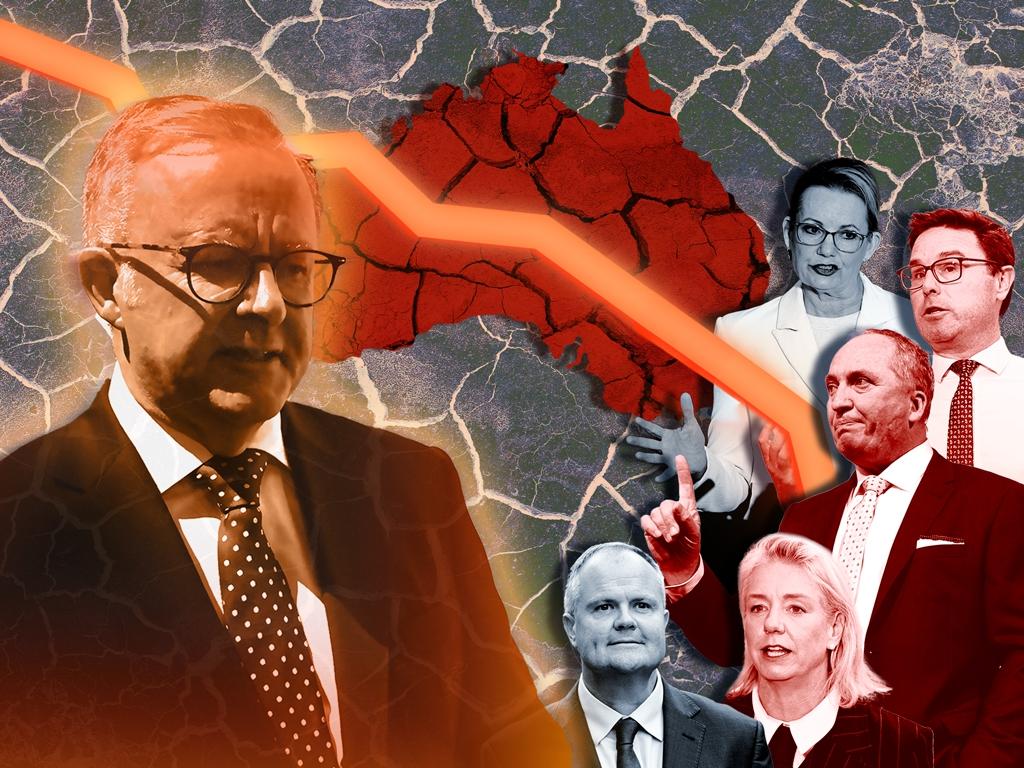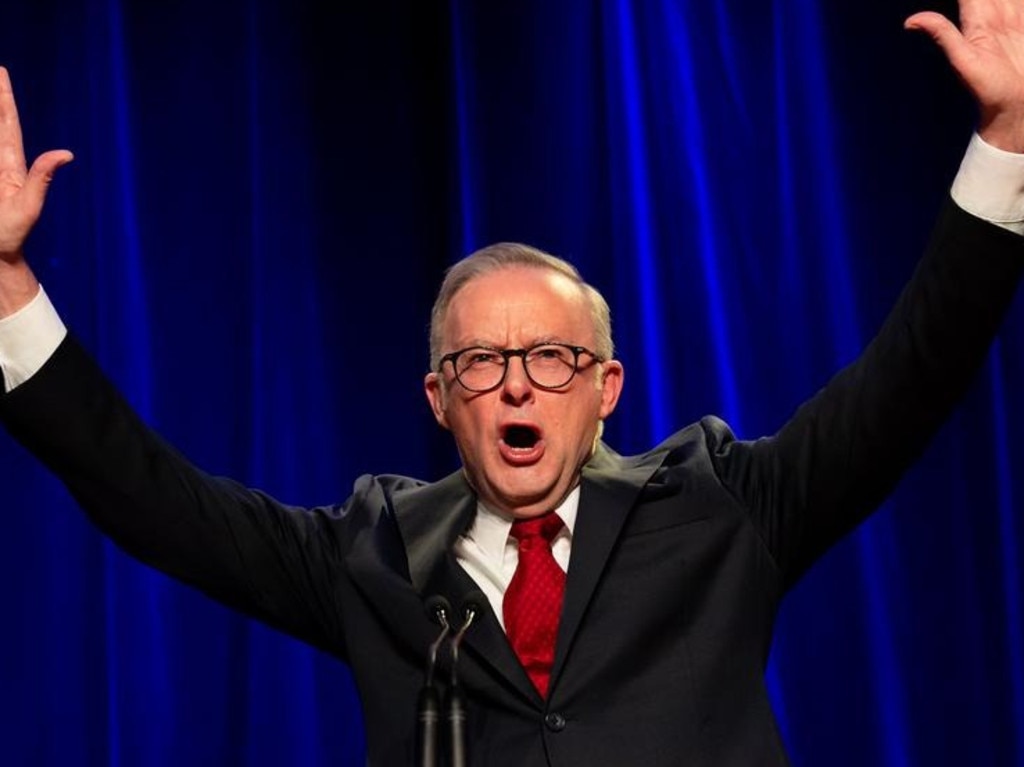Coalition’s phoney war a mindless act of self-harm
The parties’ rift was a break-up instigated by elements from both sides of the partnership.
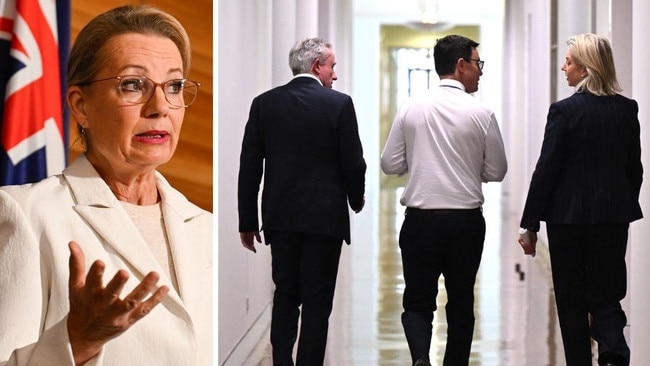
The central grievance the Liberal and Nationals parties are now considering is whether the only thing worse than a bad marriage is the divorce.
The gravity of what is at stake now appears to have dawned on both leaders. The only feasible, credible proposition at the next election is that Sussan Ley leads a Coalition of the Liberal Party and the Nationals.
At some point the Coalition will have to be put back together again. But what has occurred during the past week has been an act of mindless self-harm for the Coalition.
There have been significant public and private interventions that will have been influential in getting both sides to the mediation table on Thursday.
Former prime minister John Howard’s public comments presumably would have been repeated in private to Ley in their discussion earlier this week. With another former Liberal prime minister, Tony Abbott, adding: “It is a recipe for permanent opposition.”
It is understood that Howard, Abbott and former Nationals heavyweights John Anderson, the former deputy prime minister, and John Sharp, who were equally unsettled, had been engaged in discussions with several MPs on both sides as late as Wednesday.
Ley’s decision to delay the announcement of a shadow cabinet to reconsider the Nationals’ four demands is now a fundamental test of maturity for the Liberal partyroom. The pressure internally from some of Ley’s own MPs was divided among those embracing the split and those who were telling her it was madness.
Ley claims her decision to reconsider the four key demands from the Nationals was prompted by David Littleproud’s olive branch of dropping another demand that Nationals MPs should not be bound by shadow cabinet solidarity conventions.
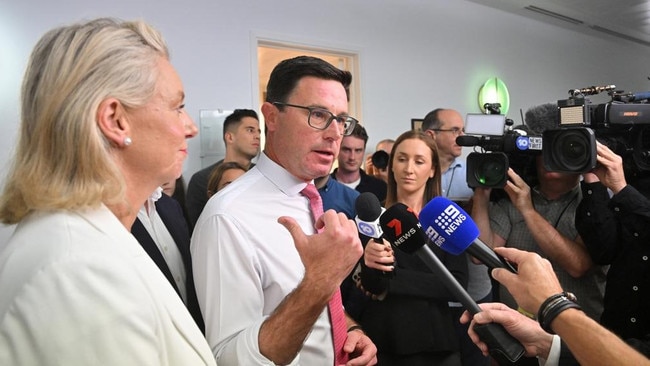
But the Liberals are deeply split on at least two of these issues. Nuclear power and competition policy on supermarkets will be unacceptable to many moderates aligned to Ley. But even if those can be settled, the next debate will be on net zero and emissions targets. For a Coalition to survive, a compromise must be reached. There are moderates who will find this unacceptable.
The schism facing the Coalition is similar to the problem Labor faced heading into the 2019 election when it, too, failed to develop a narrative that spoke to competing constituencies – defined by the debate over the Adani Carmichael coalmine and Labor’s traditional blue-collar base versus the inner-city activist movement.
Ley now faces a test of her abilities to unite a deeply divided partyroom. What comes next will determine whether the Coalition split is the shortest-lived in its history or becomes an existential and enduring schism with unforeseeable consequences.
The Coalition has endured as a relationship for more than a century, if one counts the Nationalists and Country Party coalition of Stanley Bruce and Earle Page in 1923. There have been several Coalition separations since, with issues ultimately resolved once cooler heads prevailed or where the necessity to govern made it practicable. What has marked this new crisis as different, however, has been the apparent motivations and machinery behind the split.
The fig leaf of unresolved issues on matters of principle masks the personal ambitions and internal deals that have fuelled it. This is not a tantrum solely of the Nationals making. It was a break-up instigated by elements from both sides of the partnership.
But if one assumes Howard’s position, a break-up of the Coalition is potentially disastrous, with the risk of institutionalising a crisis for centre-right politics in Australia.
Conservative Liberal MPs are convinced Ley’s decision to break with convention – that all policies remained on the table until reviewed – ultimately forced the Nationals’ hand. Perhaps deliberately. The question is whether it was a key factor in the demands for support among a group of Liberal moderates who were also seeking a break-up of the Coalition. The fact it was being celebrated by elements of the NSW Liberal moderates, including former MP Jason Falinski and Melbourne MP Tim Wilson, speaks to this theory.
“I think it’s actually great,” Falinski said.
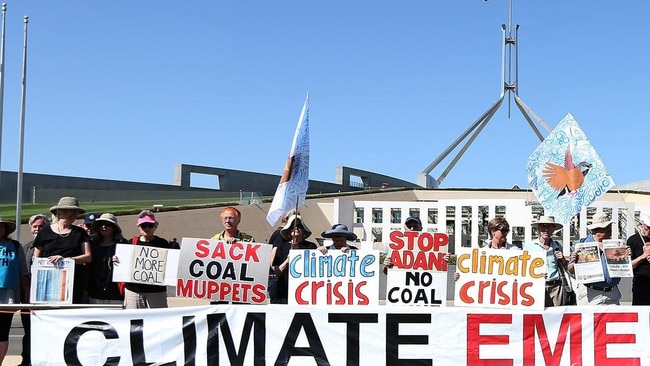
Wilson echoed the sentiment. “As a junior partner in any coalition the Nationals should be strong, but we need to be even more confident and bold about who we are, what we stand for and who we stand for. This gives us that chance,” he said this week.
The criticism of Peter Dutton’s agenda was not that it was Labor-lite but that the Liberals presented as a pale imitation of the Nationals.
That Littleproud was the instigator of the separation by seeking immediate confirmation on key policy questions also speaks to his own motivation. Doubtless it was the price paid to ensure Littleproud’s own leadership remained intact through the support of the non-coalitionist members of his own team.
The saga appears to be a case of an implied mutual agreement fuelled by a minority of members of each party and the maintenance of leadership ambitions by both leaders.
Ley’s delay of the announcement of a shadow cabinet consisting solely of Liberals also has delayed the potential of a poison pill that would’ve made a reformation of the Coalition almost impossible.
Having filled all shadow positions with Liberal MPs would have closed the door to the Nationals coming back in without Ley sacking some of her own to free up frontbench spots. This would have had consequences for her own leadership.
The broader consequences of the split, however, appears to have dawned on both leaders.
Whether a reunification can be achieved is now in discussion.
The sticking point will remain net zero. There is little chance the Liberals will drop this commitment. It would be a non-negotiable element of any agreement to reform Coalition. Yet Ley will have to be careful.
Few within the Liberal Party, and presumably a number of Nationals, would want a repeat of the 1987 debacle – the last time both parties split – which resulted in Nationals candidates running all over the place in three-cornered seat contests against Liberals in the 1988 election.
“I hope I don’t need to remind followers of both parties of the terrible political consequences of the destruction of the Coalition in 1987 at the hands of the Queensland National Party,” John Howard told The Australian earlier this week. “I’m not likening it to this, but it is a guide to what happened when both parties think they can achieve more separately than together. They can’t.”
The magnitude of the Liberal Party’s election loss, and now the split of the Coalition itself, has naturally drawn some senior figures to compare it with the crisis of the 1940s for centre-right politics.
This week Abbott offered a searing appraisal of the split, urging the parties to get over the post-traumatic stress disorder of the election loss, describing the split as a “recipe for permanent opposition”.
“It’s deeply regrettable because the history shows that the Coalition wins together and loses separately. It’s very important that there is a strong and clear alternative to a deeply underwhelming government,” Abbott told Radio 2GB on Thursday morning.
“If the Libs and the Nats go their separate ways, we won’t have one strong opposition, we’ll have two opposition parties that are fighting each other as much as they’re fighting a bad government.”
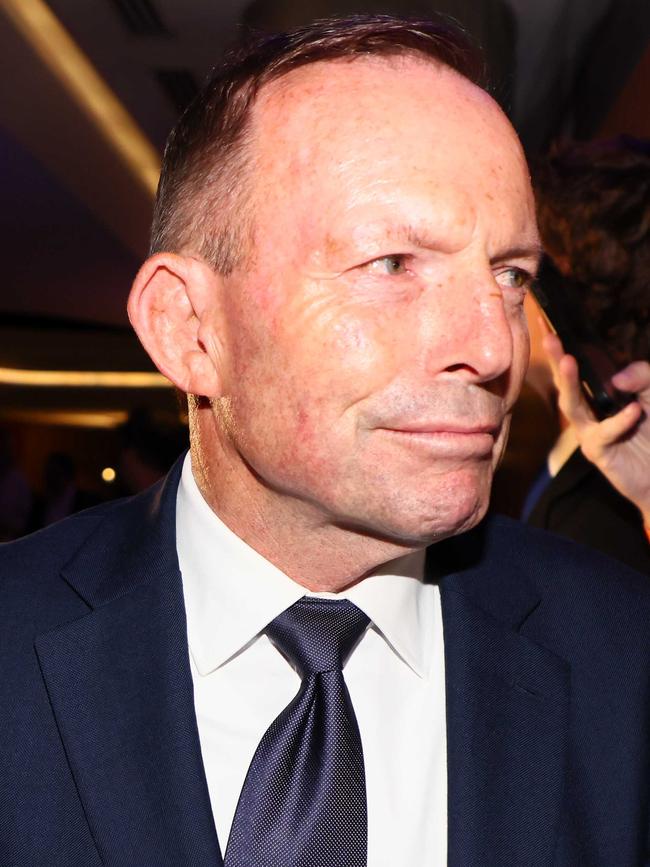
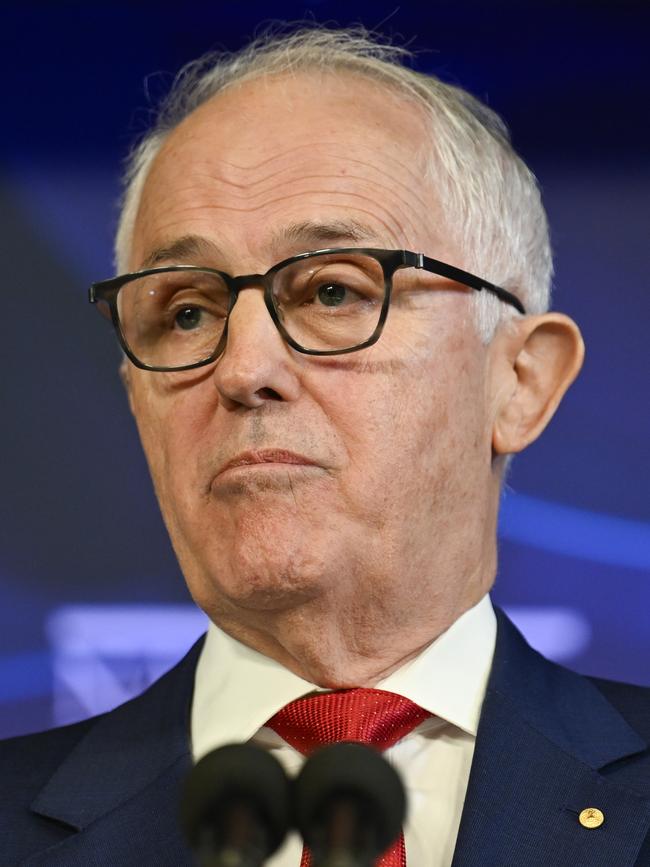
This is at least one point Abbott and his former Liberal prime ministerial rival Malcolm Turnbull share.
Turnbull branded the Nationals’ tactics as “stupid” and politically reckless.
“This is a fight about nothing. They’ve just done enormous harm for no purpose at all, the Nationals, by blowing it up in this way,” Turnbull told an ABC podcast. “The National Party is treating the Liberal Party with zero respect and trying to stand over them, and if Sussan Ley goes along with it … everybody will be saying this is just another case of the tail wagging the dog.”
Howard also issued a sharp aide-memoire to the 1996 election when the Liberal Party won enough seats to govern in its own right without the Nationals. Considering what had occurred a decade earlier, there were plenty of Howard’s colleagues urging him to split with the regional wing.
“I said no,” Howard told The Australian. “I said no because I realised that we would need the partnership of the National Party after the following election, and of course we did as we lost a lot of seats in 1998.
“I’m naturally, as a strong coalitionist, I’m very concerned about (the) developments and I hope the two parties continue to talk to each other, and I hope that Coalition is re-formed well before the next election.
“There have always been some policy differences, there is nothing new about that. It’s important that the policy differences be resolved or accommodated within the framework of a Coalition. If we go our separate ways, those issues will harden and become greater.”
Even those within the Liberal Party with hardened views about the Nationals and who privately back the split, recognise that at some stage, the Coalition will have to be re-formed.
The countervailing view, rejected by coalitionists, is that this is the kind of catharsis the Liberal Party needs.
“This is a metamorphosis,” said one senior Liberal figure, who preferred to remain anonymous.
“It has been coming for a decade, with the Nationals obsessing about One Nation and wanting to build totems on the right. They were always frustrated that the Liberals were holding them back.
“Well, go for it, you are now unshackled. You are about to become the Greens on the right.
“They will be talking policy that appeals to 10 per cent of the population.”
Some point to the inconsistency in the lecturing of the Liberal Party not understanding modern Australia while insisting on keeping 90-year-old structures.
Those in favour of the split cite the fragmentation that has already occurred in Europe, New Zealand, Canada and even Britain.
Germany has only just formed a workable government with an odd assembly of coalition partners three months after its election.
But academics suggest this is a false equivalence.
Brian Costar from the Institute for Social Research, Swinburne University of Technology once likened it to a platypus – a bizarre species found only in Australia.
And for that reason, comparisons with Europe and the natural fragmentation are disputed.
Rather than coalitions of parties, in Australia it is “the Coalition”.
The strength and endurance of the relationship across more than a century suggests it has its own identity. The temptation has been to view the Coalition as a single party for political purposes but this is also misguided.
It was once described as “the most powerful and durable alliance in Australian politics”.
This assumes, however, that the contemporary model remains relevant to a changed electoral landscape. Australians are demanding economic security. The modern problem is the public sees security as compensation from the government rather than prudent fiscal and economic management.
Labor is playing to that question and it appears to be the answer to it for the time being.
The Liberal Party today is a victim of competing demands. Australians appear to have lost an appetite for fiscal responsibility and enthusiasm for a pro-enterprise agenda, and are no longer persuaded by the notion of mutual obligation.
“They think they need protection from the government because of the economic insecurity and are not accepting of the view that bigger government is not in their long term interests,” another former senior Liberal figure said. “The Liberal Party doesn’t need to be reinvented, it simply needs to start the process of winning people over to this view.”
This is critical to the party’s challenge: how it can coalesce the non-Labor vote in Australia to form a government.
This was the fundamental question that Robert Menzies asked before 1944. But even Menzies knew the Liberal Party could not govern without the parliamentary numbers of the Country Party.
The answer may end up being the reformation of the Coalition but the essential question will remain for the Liberal Party. What is modern Australia and how does the Liberal Party service modern expectations? This will require deep contemplation.


